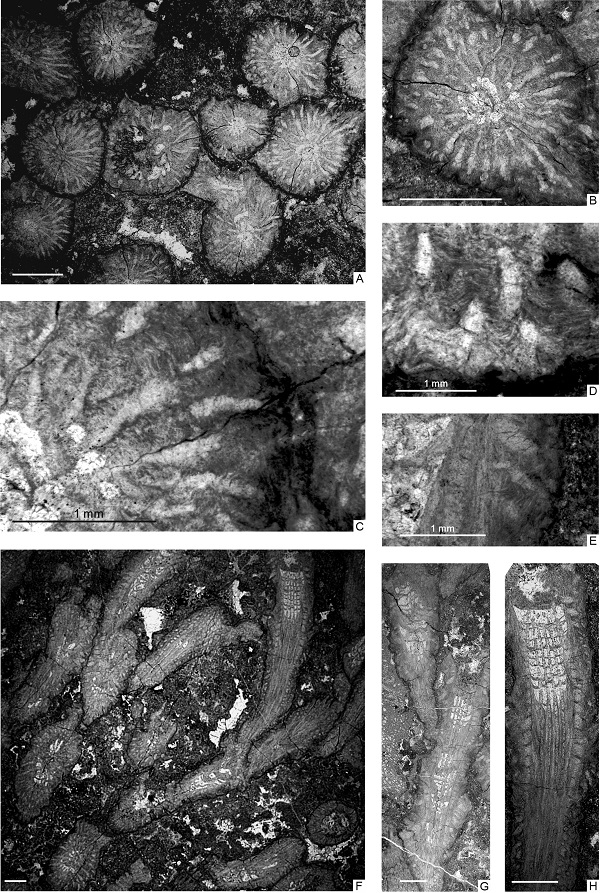Ordovician corals in eastern Australia are mostly confined to the Upper Ordovician series, with the earliest tabulates occurring in strata which span the uppermost Darriwilian (upper Middle Ordovician) to basal Sandbian (lower Upper Ordovician) interval. Recognition of the biostratigraphic utility of coral faunas in the field as an adjunct to mapping Ordovician limestones in NSW led previous authors to propose a series of four coral/stromatoporoid faunas: C/S I–IV from oldest (Eastonian 1, equivalent to latest Sandbian–earliest Katian) to youngest (Bolindian 1–2, or latest Katian). Such a local biostratigraphic framework permits an accurate means of dating field collections in the region, and has also enhanced our understanding of the evolutionary history of corals and stromatoporoids during this time interval.
Corals representing the sole occurrence of C/S Fauna IV of the regional biostratigraphic scheme occur in limestone in the uppermost Malachis Hill Formation of the Bowan Park area, central New South Wales. Though this coral fauna is restricted to a relatively thin limestone band, exposed intermittently for approximately 1.5 km, its significance greatly outweighs this in terms of completing the coral biostratigraphic scheme and also in contributing to the knowledge of the biogeographic relationships of the region in the Late Ordovician.
Recently, Dr. WANG Guangxu from Nanjing Institute of Geology and Palaeontology, Chinese Academy of Sciences (NIGPAS) and his colleagues Ian. G. Percival and ZHEN Yong Yi from Geological Survey of New South Wales described corals from the uppermost Malachis Hill Formation in central NSW. Related research results have been published online in the international geoscience journal Alcheringa.
New species described and illustrated from this fauna include the rugosan Bowanophyllum ramosum and tabulate Hemiagetiolites longiseptatus. Also three other distinct species of Hemiagetiolites, H. spinimarginatus (Hall, 1975), H. cf. H. palaeofavositoides (Lin & Chow, 1977) and H. sp., an unnamed species of Paleofavosites, and three heliolitine corals, Heliolites waicunensis Lin & Chow, 1977, Navoites cargoensis (Hill, 1957) and Plasmoporella sp. were documented.
These descriptions, which complete knowledge of the entire fauna collected over 50 years, enable interesting conclusions to be drawn regarding palaeogeographic affinities of this youngest in situ Ordovician coral fauna known from eastern Australia. Its remarkable similarities to contemporaneous coral faunas from South Tien Shan and the Chu-Ili Terrane indicate strong connections between eastern Australia and the latter two terranes, supporting their positioning in equatorial latitudes of eastern peri-Gondwana. However, it is puzzling that fewer similarities exist between the eastern Australian coral fauna and those from rocks of Katian age in SE China, which may be due to either a slightly younger age of the former fauna or a relatively higher palaeolatitudinal position of South China.
This research was jointly supported by the National Science Foundation of China, the Strategic Priority Research Program (B) of the Chinese Academy of Sciences.
Reference: Wang, G. X., Percival, I. G. & Zhen, Y. Y., 2020. The youngest Ordovician (latest Katian) coral fauna from eastern Australia, in the uppermost Malachis Hill Formation of central New South Wales. Alcheringa (https://doi.org/10.1080/03115518.2020.1747540)

A new rugose coral Bowanophyllum ramosum documented from the Malachis Hill Formation of central New South Wales, eastern Australia
Download:
